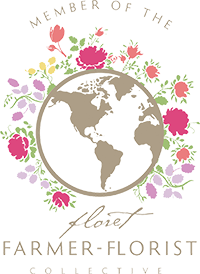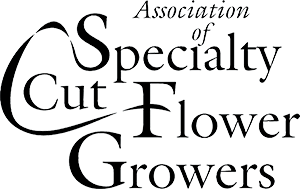In Texas, “fall” officially arrives before the weather cools off and the temperatures drop enough to enjoy the classic fall favorites of football games, campfires, pumpkin spice drinks, hayrides, etc. In fact, this year I actually turned my thermostat way down inside our house on the first fall day, only to walk outside to upper 80-degree temperatures. Oh well.
Whatever the temperature is, there are certain garden, farm, and landscape tasks that are best done in the fall.
Here is my list.
Weed pulling
Hopefully, you’ve stayed on top of the weeds during the summer. But if you’re like me, there is always some area that was overlooked and is a beast to tackle. I usually try to schedule this project after rain and (hopefully) a cooler day. Getting rid of the weeds before seed heads form is optimal. (Or you can always cut the seed heads and use them in an arrangement!)
Clean up
By fall, many of my herbs, garden vegetables and annuals are often quite large. Once they have stopped producing, or I’m finished harvesting, then it’s time to yank them. Compost any healthy vegetation. Dispose of any diseased foliage. Save any seeds that you can/want to. Seeds that I like to save are: basil; zinnia; celosia; black-eyed peas (hybridized seeds, such as some of the newer sunflower varieties, can’t be saved). Just place them on a tray, paper plate, or in a brown paper bag and allow to dry out. Shake the plant to release the seeds, then store in a sandwich bag or lunch sack with proper label.
For landscapes, I usually wait until all the leaves have fallen to do the big clean up. (We sometimes do this in phases, depending on our schedule). Technically, it doesn’t hurt to leave the leaves on the ground over winter, I just prefer to get them cleaned up and on the compost pile. As far as the plants go, some of the more scraggly things I will clip back, but anything that provides shelter for the critters, I usually leave until late winter. Things like ornamental grasses, coneflowers, hydrangeas, and sedums add both fall interest and a place for birds, so I leave those alone in the fall. (And if you’re lucky enough to get some snow over winter, they are the perfect backdrop for frost.) Remember that many of the woody shrubs, such as salvias and sages put new spring growth on existing branches. So only cut those back if they’ve gotten too large and need some shaping.
Purchase any supplies that you’ll be using over winter
Stock up on seed starting soil and potting soil when big box stores are clearing their inventory. Try to only buy what you have a place to store and will use within the next 6 months. With my growing farm, I undershot the amount that I would need and blew through my stockpile by Nov. 1. Again, oh well. I’ll make note of that and better prepare for next year.
Store materials to reuse
Roll up and store weed barrier, drip lines for irrigation*, and any other reusable materials.
Keep track of what you have and what you will need next spring. Also, make note of anything that didn’t seem to work well, such as a trouble area that didn’t receive enough water.
For irrigation, I use drip tape on my flower fields, which is put up each fall, but I use a heavier duty drip tubing on my landscaped areas and perennials, which I leave out year-round.
Order compost and mulch
For farming, order a stockpile of compost to be used as needed both now and in early spring. For home gardeners and landscapes, now is a good time to top-dress the soil with extra mulch to help plants survive winter. Plus your areas will look neater. Fall is also a great time to order a soil test and add any needed nutrients to the soil.
Plant
Yes! Fall is a great time to plant several things! Fall is the perfect time to plant trees and shrubs. They can settle in and establish roots without fighting the heat. Just remember to keep them watered (they won’t need as much water in the fall as they would in spring). Even if you don’t get around to adding the trees and shrubs you want, you can mark off the place(s) where you want to add these and start preparations, such as covering the area with weed cloth or cardboard to suppress any weeds before planting. You can even go ahead and add compost under the cloth and let the soil sit over winter.
Fall is the time to plant many of my favorite bulbs!
Allium, daffodils, anemones, ranunculus, and hyacinths are just some of the bulbs that are fall planted. They aren’t super picky about the time they are planted, so I just shoot for mid-fall. Many of these also aren’t super picky about the soil they are in, but it is still a good idea to amend your soil with compost before planting. Planting in clusters will be more appealing that planting in “polka dots.” It’s also better to plant a greater quantity of the same variety than a sprinkling of a bunch of different bulbs. The exception would be if it’s for a small cutting garden. (Please know that I break this rule often! I order bulk of certain flowers but often can’t help myself and my desire to try new things and so I end up “sprinkling” those into both my landscape and my cutting flower gardens. 😉 ).
Fall is also the time to direct-seed hardy annuals!
Confession: this is only my third year to grow hardy annuals. But I’m hooked! There are so many flowers that can be direct-seeded in the fall. And the best part about them: earlier flowers and fewer weeds to contend with! My personal favorites are bells of Ireland, larkspur and love-in-a-mist (nigella).
I hope this fall garden to-do list is helpful. I share more information and pictures on social media, so check those out.
Happy fall clean up and happy planting!
Katie


